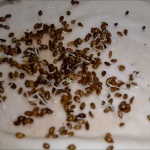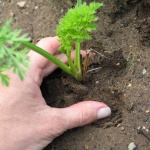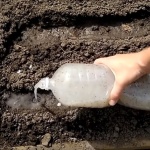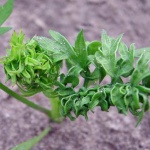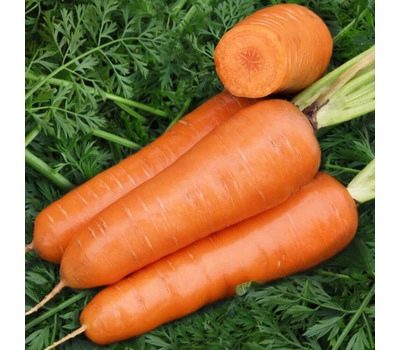
- Authors: Vilmorin
- Appointment: for fresh consumption, for canning
- Leaf rosette shape: semi-spreading
- Leaves: long, dark green, moderately dissected
- Weight, g: 100-180
- The form : tapered, with a slightly pointed tip
- Taste qualities: good ones
- Composition : nutritional value per 100 grams is: fats 0.2 grams; carbohydrates 10 g; dietary fiber 2.8 g; sugar 4.7 g; proteins 0.9 g
- Ripening terms: mid-season
- The size : average
Red Cor is a type of carrot of the Chantane type, the author of which is the French company "Vilmorin". This variety has a lot of advantages, for which Russian gardeners fell in love with it.
Description of the variety
One of the features of the Red Cor variety is its adaptability to heavy soils, as well as suitability for winter sowing. This carrot has an excellent presentation, which it can keep for a very long time, up to spring. Its excellent taste is also well preserved.
Characteristics of the appearance of the plant and root crops
Red Cor has a semi-spreading rosette of leaves, long, dark green leaves, and medium-sized conical tubers with a flat greenish head. The skin of the vegetable is smooth, rich orange, the same color and core. The mass of root crops is approximately 100-180 g, and their length is 16-20 cm.
Purpose and taste of tubers
This carrot is distinguished by its dense juicy sweet pulp, which contains many useful substances, which are preserved even when the product is frozen. Consumers recommend eating this carrot fresh or using it for canning.
Maturation
The variety belongs to the mid-season varieties, from initial germination to harvest it takes about 100-110 days.
Yield
It is a high-yielding variety, capable of producing an average of 4.2-8.5 kg of vegetables per square meter.
Growing and care
Sowing of the Red Cor variety is carried out in April-May. For planting, choose a well-sunlit area that is free from weeds in advance. Recall that this species easily tolerates even heavy soils, however, it is recommended to avoid ridges where celery or dill previously grew, it is better to plant a crop in the place of nightshades, onions, and garlic.
Although this variety is suitable for winter sowing, this can not be done everywhere. For example, in regions with cold winters, seeds can freeze out, so in order not to risk the harvest, give preference to spring planting. Sowing consists of the following stages.
- Go through the seeds, fill them with water and remove those that have sunk to the bottom. This is how the germination of seeds is checked.
- Germinate the seeds in a damp cloth, this usually takes about a week.
- Make grooves in the area. Plant sprouted seeds according to the 5-7x15 cm pattern, leave up to 20 cm between rows.
- Cover the seeds with earth and compact slightly. Sprinkle over the planting site.
When the shoots sprout, they should be weeded often, but very carefully. As the seedlings grow, the bushes are thinned out. Watering is done once every two weeks, and if the plant is planted in a greenhouse, then even less often. Before the first thinning, about 5 liters of water are usually required per square meter, after adjusting the density of planting, the volume of water increases to 10 liters, and then to 12-15 liters. Use lukewarm water to moisturize. Watering should be stopped three weeks before harvesting.
If the vegetable is grown in greenhouse conditions, it is better to organize drip irrigation in order to prevent waterlogging of the soil and the development of fungal diseases. This variety does not need feeding. Mineral fertilizers are applied only when unwanted changes are detected on the leaves and roots.
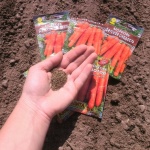
Carrots are one of the most unpretentious crops in terms of growing conditions; they can endure a short drought and a short cold snap. However, to get tasty and large root crops, you should adhere to the basic rules for planting carrots.


Disease and pest resistance
The Red Cor variety is distinguished by high immunity to diseases and pests, it is not prone to cracking and flowering. However, if the rules of agricultural technology are not followed, the plant can occasionally be affected by some ailments, for example, phomoses, white and black rot, powdery mildew. To avoid these diseases, do not ignore the stage of seed disinfection, do not neglect crop rotation, avoid overflows, remove weeds in time, keep the area clean.

Carrots grow in almost any garden. There is an opinion that this culture is very resistant to all kinds of diseases and pests, but this is not the case. Without proper care, carrots become susceptible to all kinds of infections and are affected by harmful insects.


